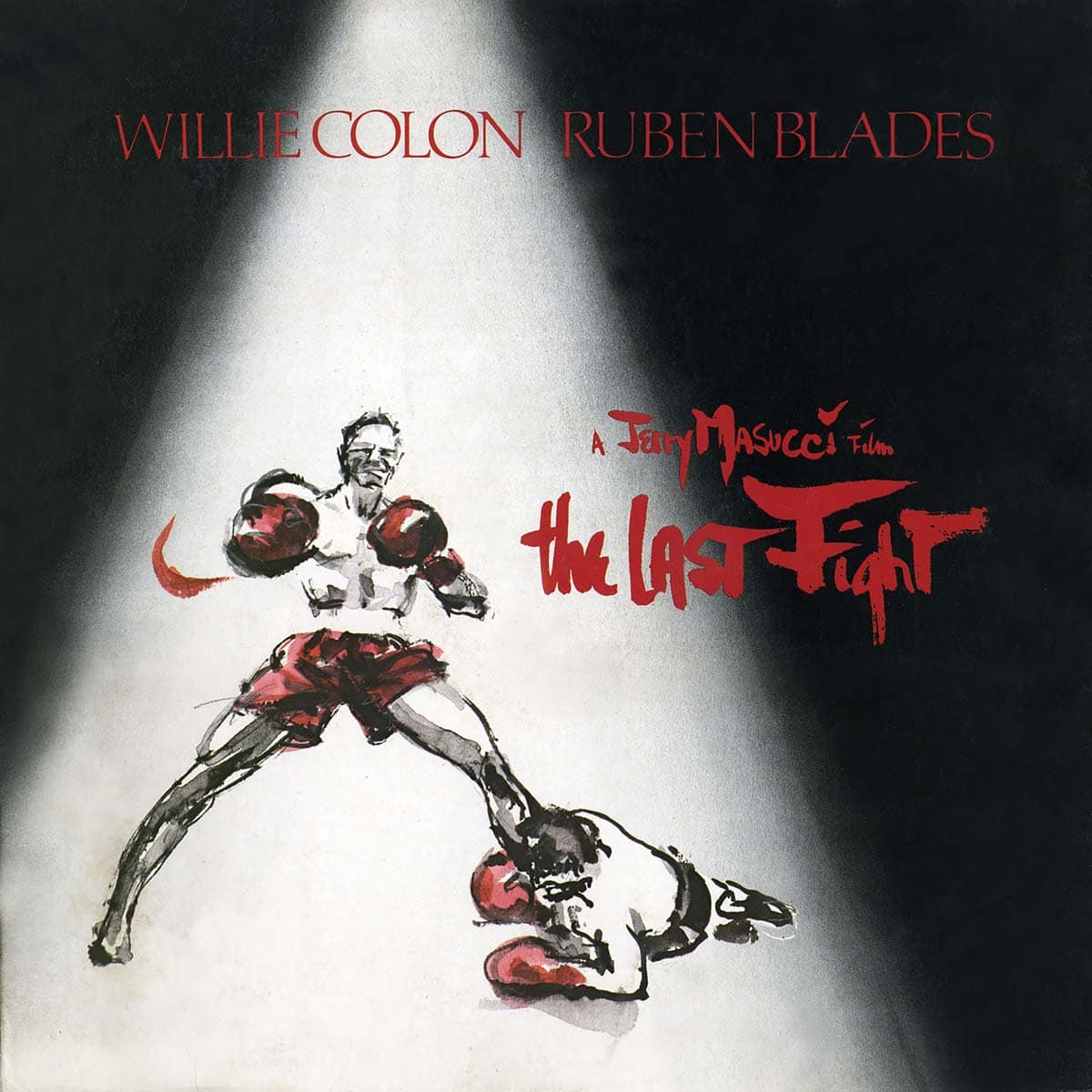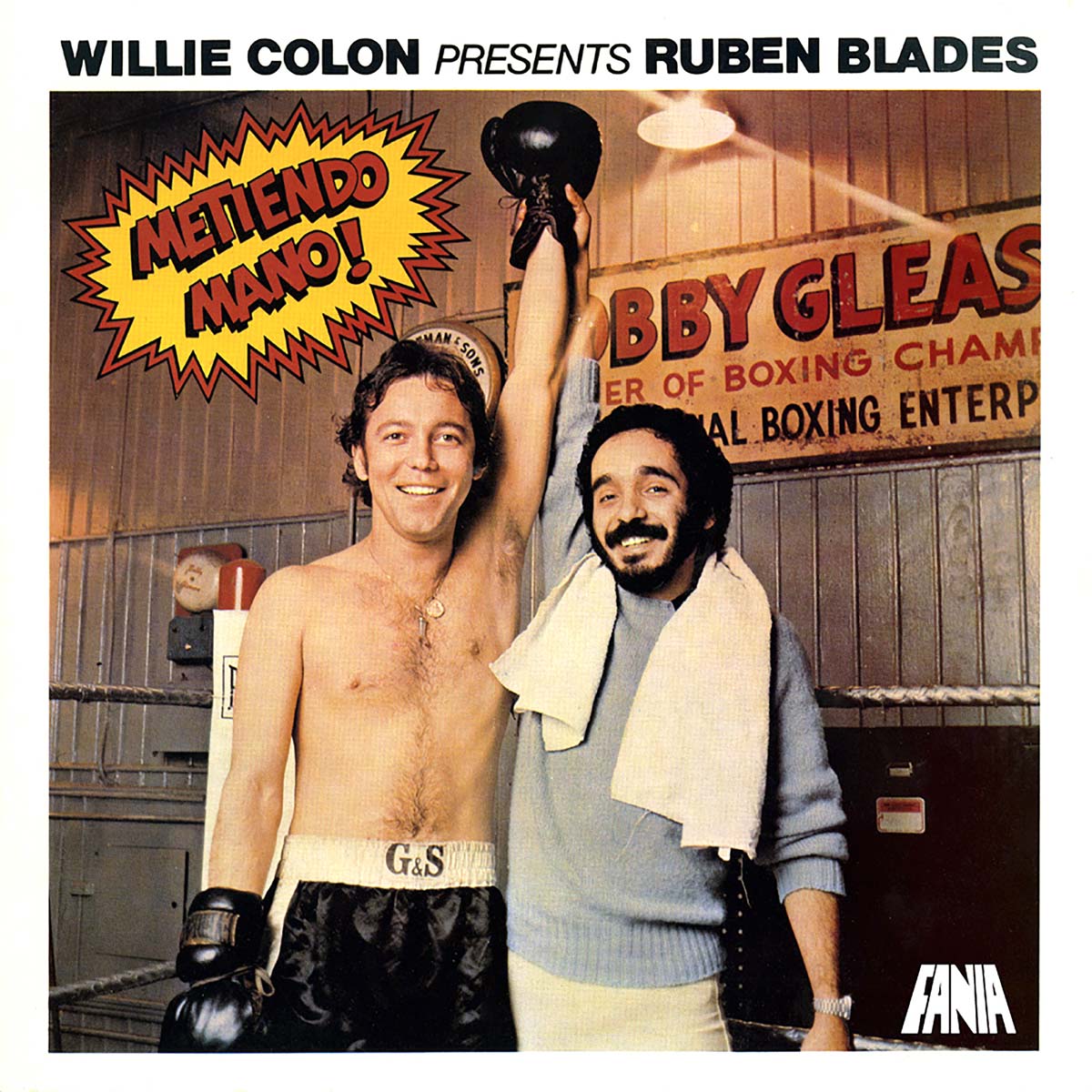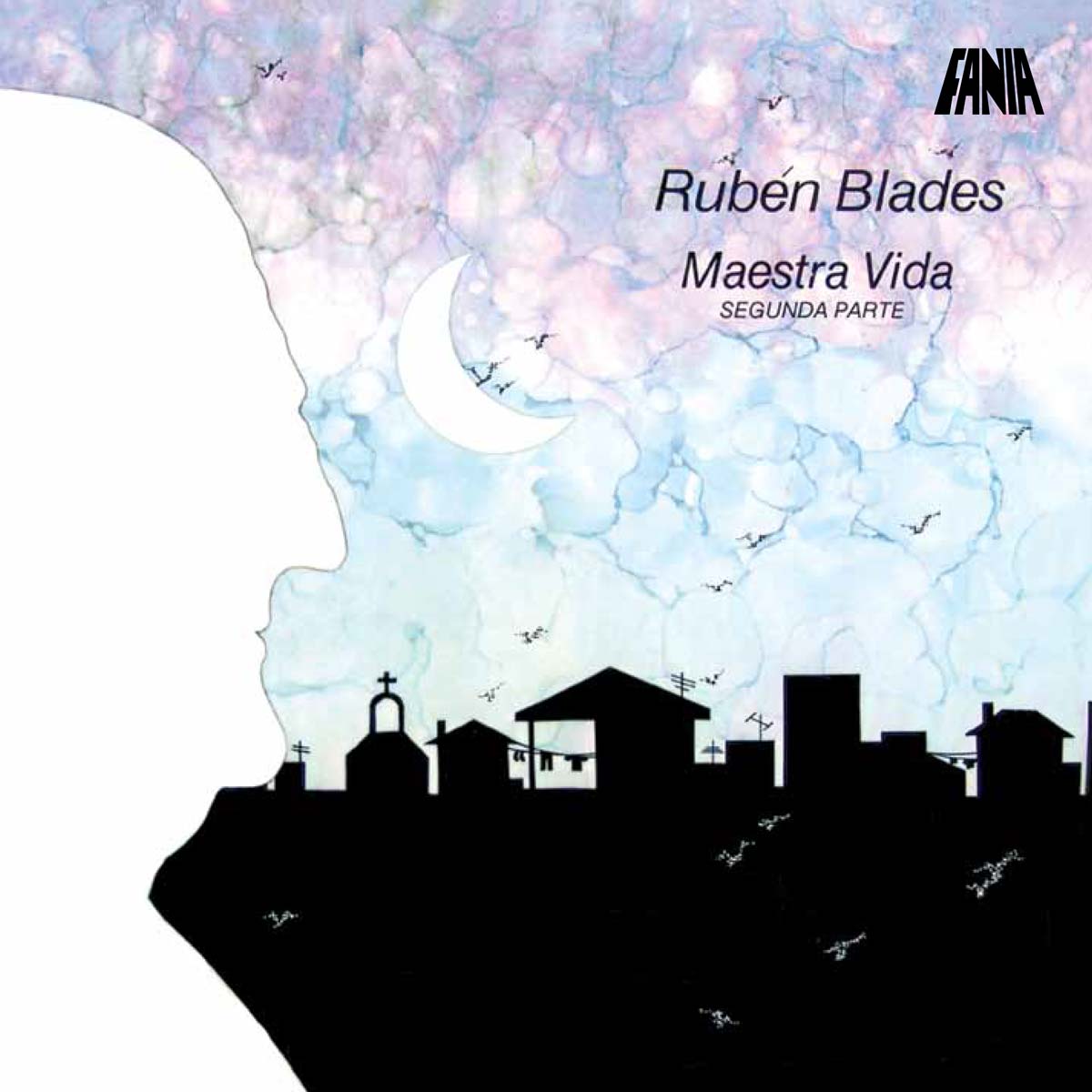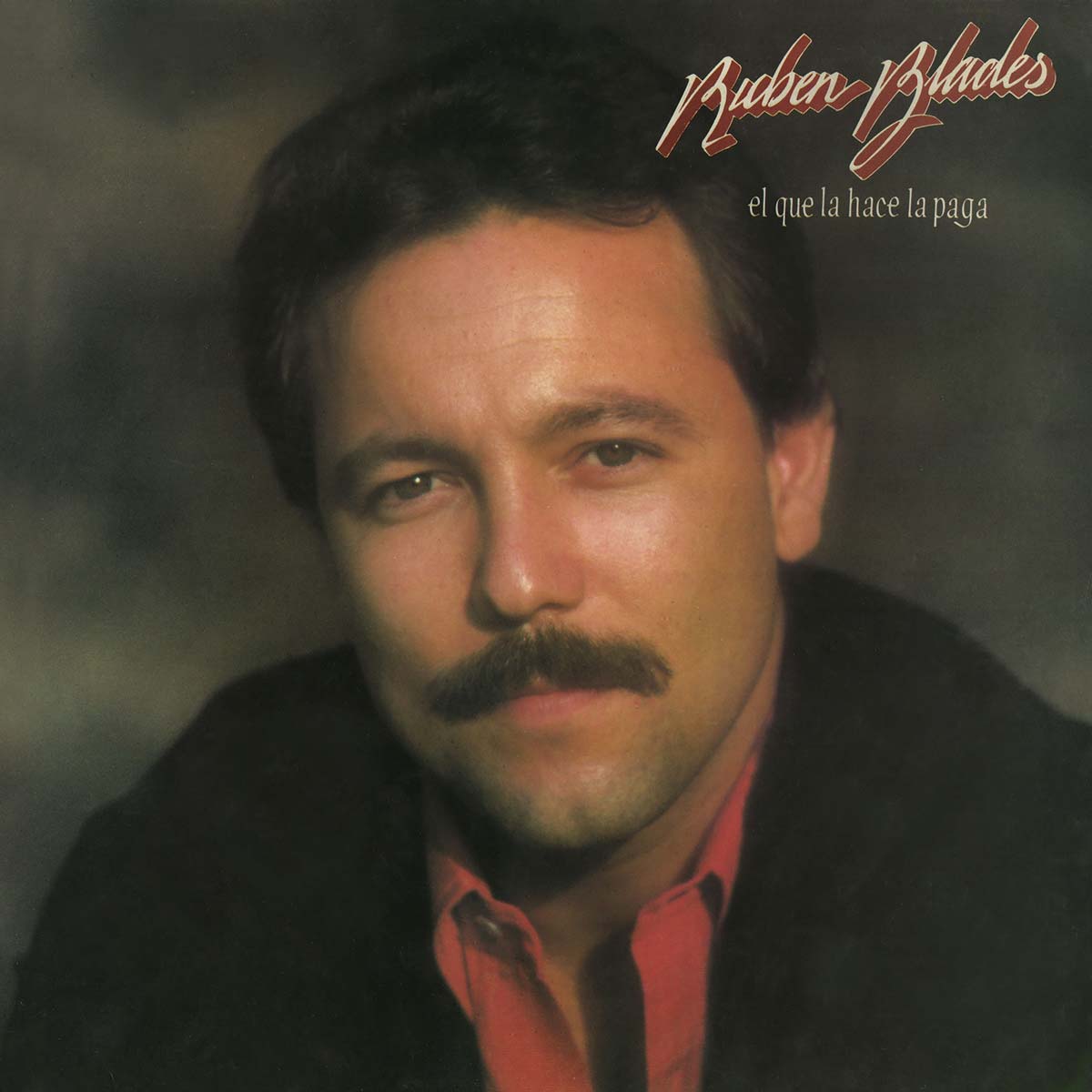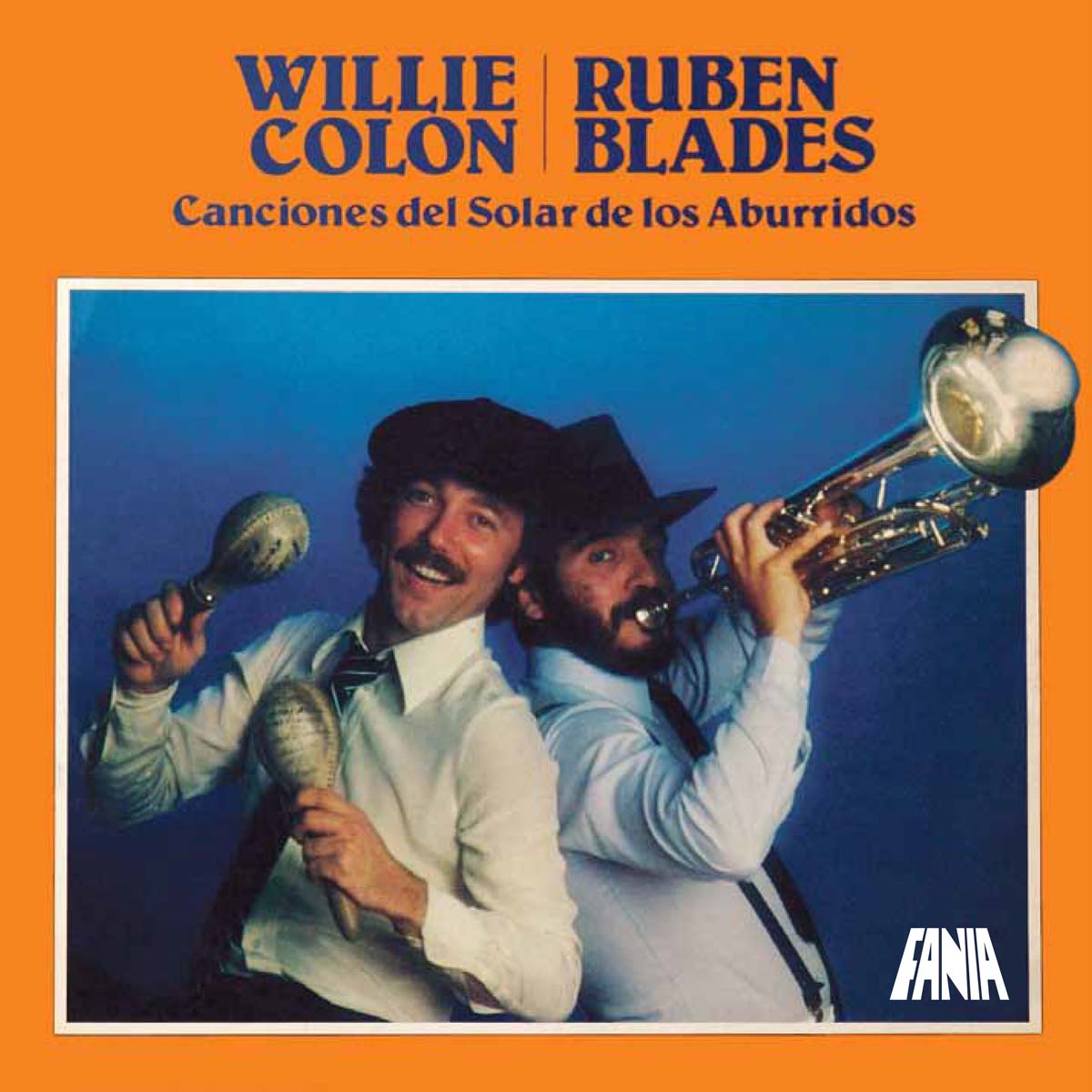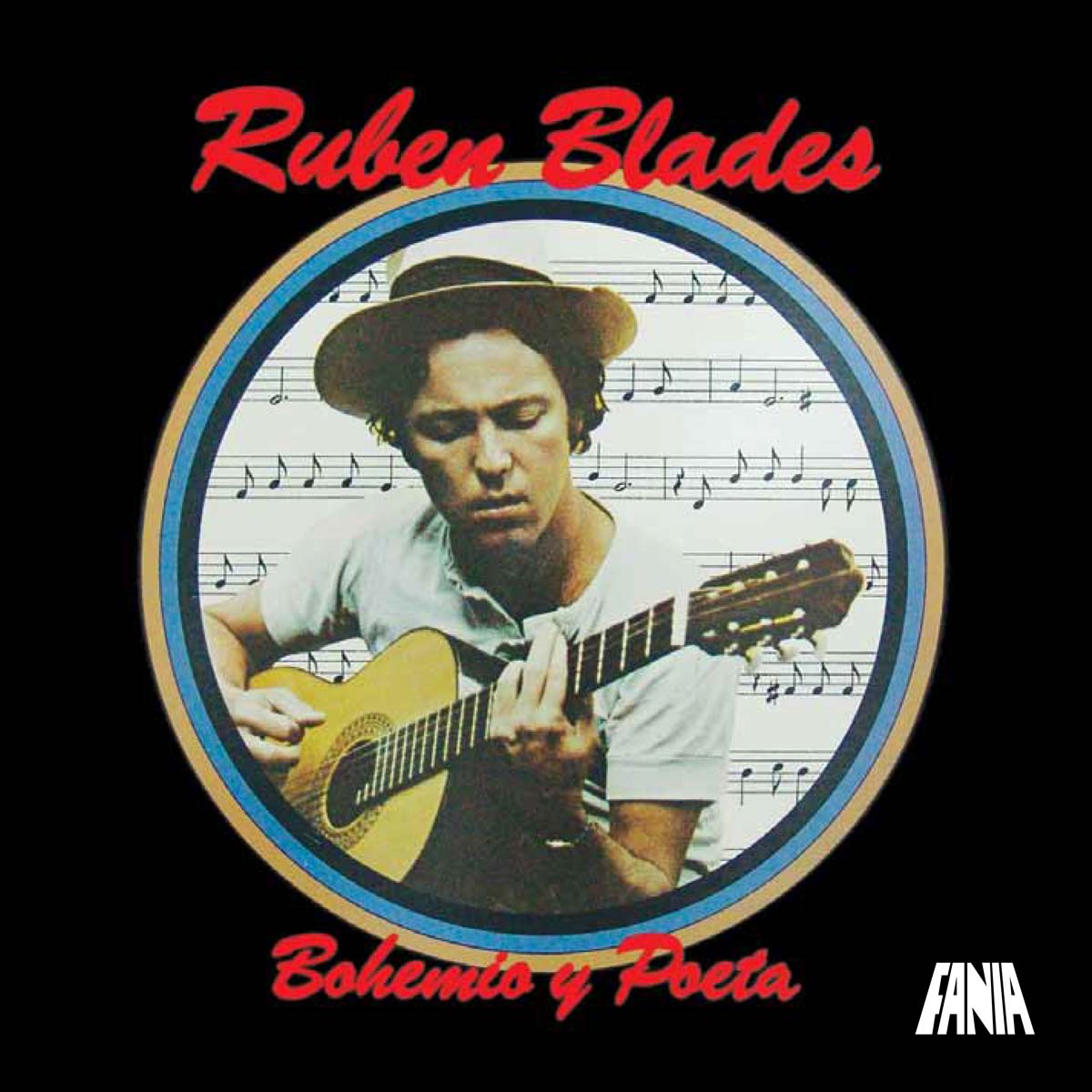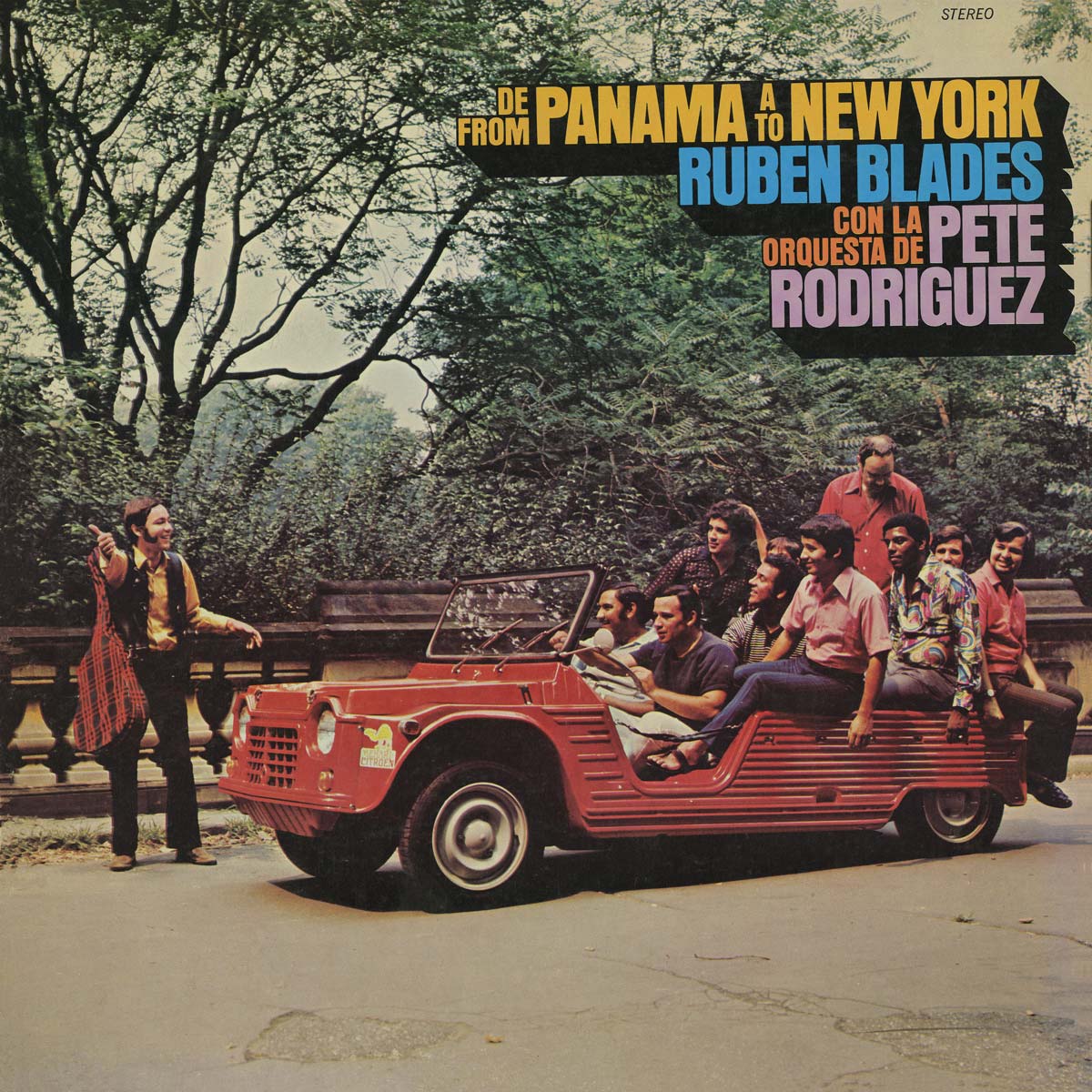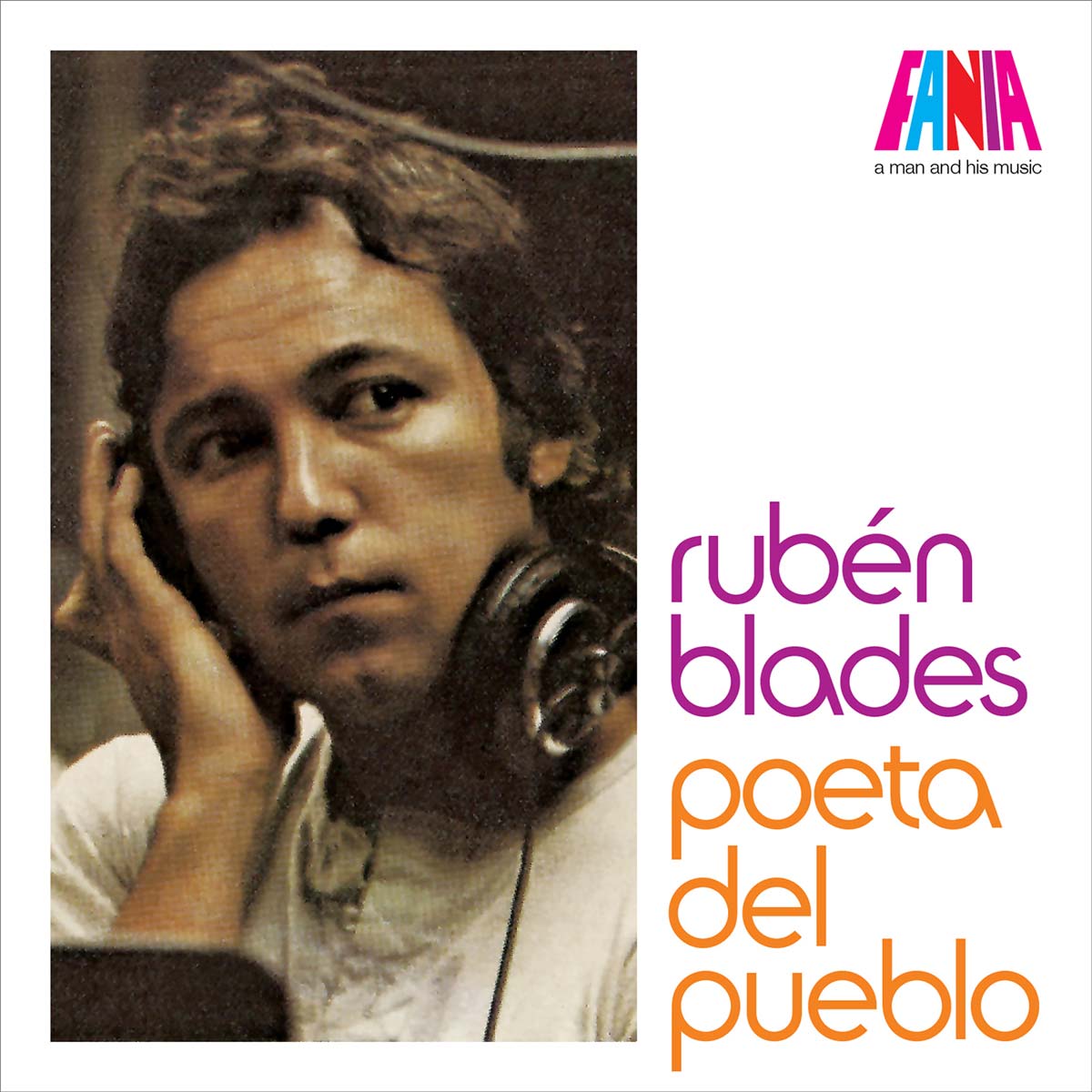
This collection of classic tracks recorded by Rubén Blades for the Fania label includes some of the most exhilarating anthems in the history of salsa. Songs like “Pablo Pueblo,” “Tiburón” and the legendary “Pedro Navaja” are as fun and danceable as Afro-Caribbean music can be.
But they also occupy a meaningful place within the development of this music: Blades’ songbook signifies the coming of age of salsa – its maturity as a limitless Latin genre with the ability to make you dance and think at the same time. In a different time and place, Blades could have become a thoughtful rocker or a revolutionary troubadour. Was it fate that decided his birth in Panama and his subsequent move to New York during the ’70s? No matter what path he chose, Blades still occupies a place of honor among Latin giants like Cuba’s Silvio Rodríguez, Brazil’s Milton Nascimento and Spain’s Joan Manuel Serrat.
The fact that salsa was his genre of choice was a blessing for tropical music. The songs in this compilation mark a before and after for salsa. Things would never be the same after Blades’ commercial and artistic triumph during the late ’70s and early ’80s. Together with singer Héctor Lavoe and trombonist, composer and producer Willie Colón, Blades formed a Holy Trinity of sorts within the Afro-Caribbean field. Lavoe was the voice. Colón was the sonic alchemist, the enabler. And Blades was the socially conscious poet, whose lyrics and adventurous cosmovision would inspire generations of Latino music lovers. “People still memorize the lyrics of a song, at a time when poetry is no longer being read,” Blades told me during an interview conducted at his Los Angeles home a few years ago. “Without any literary pretensions on my end, I gave people poems that offered recognizable images and situations. I think that’s why songs like ‘Pablo Pueblo’ and ‘Pedro Navaja’ enjoyed such a wide acceptance.” It could be argued that Blades reached his artistic apex on the superlative albums that he recorded for the Elektra label during the second half of the ’80s. And that he became a truly global musician throughout the ’90s and the new millennium, when he created a new, eclectic hybrid of pan-Latino popular music on gorgeous records such as 1992’s Amor y Control and 2002’s Mundo. Even though he has kept busy working in politics and as a Hollywood actor, Blades is still recording new music – his future albums will undoubtedly continue to surprise, challenge and delight his listeners. This compilation focuses on the dizzying years following the New York salsa explosion of the ’70s when Blades became one of the genre’s most charismatic stars.
The music on these two discs is all about the promise of a singer/songwriter who was only beginning to shine. To this day, the albums that Blades recorded for Fania stand as some of the most unique, addictive and treasured jewels in the label’s illustrious history. Descarga Caliente Born in 1948, Blades traveled to New York in 1969, where he recorded his debut album with the help of producer Pancho Cristal. Titled De Panamá A Nueva York, the session was produced with the orchestra of boogaloo master Pete Rodríguez. The album was not a hit, but a young Blades got to listen to himself on the airwaves for the first time when the single “Descarga Caliente” was played on Colombian radio. Canto Abacuá In 1974, Blades returned to the United States, and eventually moved to New York, where he got a job as a mailroom assistant with Fania Records. He quickly positioned himself as a name to watch, giving his excellent compositions to many of the label’s big artists, and performing vocals with Ray Barretto’s orchestra. This epic song is culled from the seminal Barretto! album. El Cazangero Included in Willie Colón’s transitional 1975 LP The Good, The Bad and The Ugly, “El Cazangero” is the first song that sounds like a bona fide Rubén Blades classic. Aided by Colón’s velvety production, the song is a mesmerizing fusion of Brazilian samba beats, a funky brass section and Blades’ perennially nostalgic vocals. Pablo Pueblo In just a couple of years, Blades blossomed as a composer and performer. His work was also boosted by his partnership with Colón, who had just left the orchestra he shared with Héctor Lavoe. The duo’s first album, Metiendo Mano, opens with the singer’s first serious attempt at delivering a strong social message. The lyrics, about the life of a working class family man who falls victim to the corruption and institutional indifference of your average Latin American country, are heartbreaking. The sophisticated musical accompaniment brims with texture and majestic shades. Juan Pachanga The late ’70s was a time of feverish activity for Blades.
Although Fania executives were initially reluctant to release his songs, stating that “no one likes to hear depressing lyrics,” they quickly realized that Blades’ own brand of salsa had tremendous sales potential. The singer became one of the label’s biggest names, and he was dutifully invited to participate in the studio recordings of the famed Fania All Stars. Included in the 1977 LP Rhythm Machine, “Juan Pachanga” boasts a hip arrangement by Louie Ramírez and Blades’ poignant lyrics about a Latino party animal with a broken heart. Watch for the timeless keyboard solo by Papo Lucca – one of Blades’s most admired piano players, and the leader of Puerto Rico’s infamous Sonora Ponceña. Paula C A lush, autobiographical tour de force focusing on Blades’ first serious romantic relationship. Once again, the influence of Brazilian music (perhaps Rubén’s favorite music genre) adds variety to the mix. One of the singer’s most melodramatic productions, and a concert favorite to this day. Plástico Here’s one of Rubén’s most brilliant compositional tricks: a shimmering disco intro that unfolds, beautifully, into a rugged Afro-Cuban beat and a virulent indictment of shallow people and their insidious prejudices. And who can forget the grand finale, when he makes a call for Latin American unity by shouting out the names of every single one of the continent’s many nations? The opening track of the 1978 smash Siembra, the epitome of the Blades/Colón collaboration, and for a very long time, the biggest selling album in the history of salsa. Made up of seven timeless tracks, Siembra also includes the hilarious solo de boca (mouth solo) of “Buscando Guayaba” (because the guitarist just forgot to show up), as well as the hypnotic melody of “Dime.” And, of course, the sheer magic of “Pedro Navaja.” Pedro Navaja Who says there’s no place for literature in salsa? Merging Bertolt Brecht with Franz Kafka and barrio folklore, Blades narrates the gory encounter between a vicious prostitute and the title’s infamous thug, concluding with the quintessential Latin chorus: la vida te da sorpresas /sorpresas te da la vida, ay Dios (“life gives you all sorts of surprises, oh God”.) Together with Lavoe’s “El Cantante” (yet another Blades composition), “Pedro Navaja” is arguably the quintessential salsa anthem. “When they heard it for the first time, the label executives told me that it was no good,” the singer recalls with a laugh. “That it was too long, that the lyrics were too complicated and people just wanted to have fun. I don’t think they ever understood why it became so popular.” Manuela In 1980, Blades released the most ambitious project of his entire career: a double LP salsa musical entitled Maestra Vida. The bittersweet story focused on a couple’s lifelong love affair, and commented on the never ending carnival of Latin American reality.
Backed by a symphony orchestra, Colón’s production was appropriately sumptuous, but the songs themselves could not match Siembra in terms of melodic content. Still, Maestra Vida stands as one of the most unique projects in the Afro-Caribbean genre. Since its release, Blades has often spoken about recording the third and final installment of this sweeping Latin saga. Tiburón 1981 found an invigorated Blades and Colón returning with Canciones del Solar de los Aburridos. The duo would later collaborate on the soundtrack to the ill-fated movie The Last Fight, and reunite in 1995 for Tras La Tormenta – a so-called reunion album that found them recording their alleged duets in separate studios. Canciones would be their last masterpiece together. “It’s amazing to me that our partnership lasted so long,” Willie Colón said candidly during an interview. “There just wasn’t enough space in the same room for two egos of that size.” The opening track of Canciones, “Tiburón” is a brutal political metaphor about the relationship between Latin America and the U.S. that motivated some listeners to misunderstand Blades as a rabid leftist. Colón’s opulent arrangement is peerless, and the moody sound effects add texture to this transcendental tropical gem, which has been recently covered by Latin rock singer Vicentico. Ligia Elena Also from Canciones, “Ligia Elena” illustrates Blades’ knack for narratives imbued in humor and romance. The story of a young girl from a good family who runs away with a penniless trumpet player and ignites the envy of other aristocratic beauties boasts a buoyant reading from Rubén – as well as a hilarious coro by Rubén and Willie. The song may be humorous, but it continues Blades’ ongoing indictment of the racism and social prejudice than run rampant in Latin American society. Decades after its original release, “Ligia Elena” still rings true.
No Hay Chance In 1984, Blades began an exciting new chapter in his recording career by dropping his customary big band in favor of a jazzier sextet (Seis del Solar, led by virtuoso pianist Oscar Hernández.) He signed with Elektra Records and released the masterful Buscando América. He still owed the Fania label some music, though, which was eventually released without the singer’s supervision. The 1986 album Doble Filo, from which the last three cuts on this compilation are culled, was one such release. “Fania made a mess out of the last couple of albums that I did for them,” Blades told me in 1995. “They took out the vibes and saxophones and added trombones. They changed the sequence of the songs and omitted the musicians’ credits.” Still, there is much to enjoy in this straight-ahead salsa tune about a spiteful guy who refuses to take an old love back – ideal for those who mistakenly think that Blades’ lyrical scope was limited strictly to heavy subject matter. Mi Jibarita Blades has fond memories of this unassuming tune, written by David Martínez. Part of the wave of salsa songs that presented a romanticized – and utterly unrealistic – vision of life in the Latin American countryside, “Mi Jibarita” tells the story of the man who has left the stress of the big city behind, retreating to the country with a curvaceous beauty. Notice how most of the narrative is introduced by the background vocalists. When Blades’ voice finally comes in, it soars. El Cantante During the Fania years, Blades made a conscious attempt to distance himself from those fellow label mates who were heavily into drugs. The singer has often stated that even though he was never a close friend of Héctor Lavoe, he still felt a great deal of admiration for him and his gifted vocalizing. Blades showed his respect in 1978, when he decided to give Héctor the song “El Cantante” – which he had originally written as a vehicle for himself. Thanks to Lavoe’s gutsy delivery and Colón’s stylized production values, the song became Héctor’s signature tune. Blades’ own version of the song is lighter in spirit than the Lavoe original, but it boasts a rollicking sense of swing, impeccable timing and Rubén’s trademark sense of humor. He will always be remembered as the ultimate salsa songwriter – the Panamanian salsero who had a lot to say. But he was also an inspired sonero, on the same level as Beny Moré, Cheo Feliciano or Ismael Rivera. This rarely heard version of “El Cantante” is a fitting finale to an anthology of timeless Rubén Blades classics.
Written by ERNESTO LECHNER


